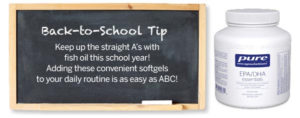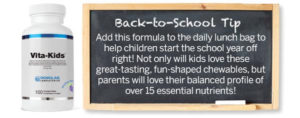Packing a healthy lunch can be a daunting task, especially if you have picky eaters.
Let’s face it.
Deciding what to eat for lunch can be a constant battle – You (adult) vs. them (child)
You – want them to be healthy.
Them – they just want what tastes good.
So how can you feed your kids well without the battle?
Here are some solutions for you.
In this blog post I can show you 4 Steps to Creating a Healthy Kids School Lunch (or yours), and then give you some sample healthy lunch ideas to get you started.
Step 1 – Start with protein
The protein source for your kids is what will help them grow properly. It doesn’t matter whether you’re Keto, Paleo, Vegan or Vegetarian – your child needs a source of protein in their lunch.
Here are some healthy animal and plant versions to get you started.
Meat – Beef or turkey jerky, Beef, bison, pork or turkey pepperoni, Beef, ham, turkey or chicken deli meat slices, Previously cooked chicken or turkey breast (ideally from pastured-raised animals fed Non-GMO feed).
Eggs – Hard-boiled eggs (ideally sourced from organic, free-range chickens).
Yogurt – Non-homogenized yogurt (ideally sourced from grass-fed cows, goats or sheep)
Cheese – Slices or chunks of cheese (ideally sourced from grass-fed cows and made from raw milk)
Beans or lentils (think about using hummus out of soaked chickpeas or adding mashed pinto or black beans and use as a dip with salsa)
Cooked quinoa, amaranth, millet or other “high protein” grains and add to above beans or lentils for a complete protein.
Special notes –
**Adding sprouts + seeds is a good way to increase the overall ‘protein value’ of the lunch.
**Take your protein source in a separate container or add to a wrap with favorite veggies.
**Please remember to properly soak or sprout your beans, lentils and even nuts and seeds (or purchase them this way) to avoid unwanted gut irritants such as lectins, phytates, and enzyme inhibitors. These “antinutrients” can bind minerals and cause inadequate absorption of nutrients from food leading to nutrient deficiencies or unwanted gas, bloating or even stomach pain.
For help on this, go to Grains, Nuts, Seeds, and Legumes—Preparation Tips
I also love Sally Fallon’s book, ‘Nourishing Traditions: The Cookbook That Challenges Politically Correct Nutrition and the Diet Dictorats’ for tips on how to properly prepare foods like organ meats, fermenting vegetables or drinks, and eating as our ancestors did for optimal health.
Step 2 – Add healthy carbs
For this, I mean adding colorful fruits and vegetables – nature’s vitamins!
Not only will you satisfy much of your child’s vitamin, mineral, and micronutrient needs, and you’re also going to ensure that they have enough carbohydrates to fuel their sports and physical activity!
Here is a list of colorful foods to add to your kid’s school lunch –
Sugar snap peas and garden carrots
Corn on the cob
Kale chips (either homemade or store-bought)
Baked or boiled new potatoes, sweet potatoes or yams (you can make these into ‘fries‘ too)
Steamed green beans or asparagus
Apple or pear slices (bring a side of almond butter for dipping)
Red or green grapes or plums
Melon slices (squeezed with a little lemon or lime to keep color)
Strawberries or blueberries
Fresh pineapple chunks and salsa
Step 3 – Always include a fat
Fat keeps your child smart, satiated and focused on the task at hand. Healthy fats also are the building blocks of hormones, cell membranes (for proper nutrients coming in and out of the cell), and keeps them at a healthy weight.
Choose from any of these healthy sources of fat
Olives (I like the dried black olives as they tend to be sweeter)
Hummus (make with extra virgin olive oil)
Avocados or guacamole
Nuts, seeds or nut or seed butter (if you go to a school that is ‘nut-free’ use seeds)
Butter or coconut oil (add to cooked veggies or lunch wraps)
Coconut yogurt or non-homogenized yogurt made from grass-fed cows.
Cheese would be considered a healthy fat if sources from organic, raw milk.
Step 4 – The superfood extras
Take your child’s health to the next level with what I consider these ‘superfoods’. They are loaded with superstar minerals, support proper gut health, and help keep your child’s immune system working well.
Bone broth or Chicken stock (use in homemade soups or add to store-bought ones).
Fermented veggies (kimchi, sauerkraut, which can be added into the wraps)
Nori wraps (these are sea vegetables found in the grocery store)
Herbs and spices – fresh or dried (don’t be afraid to add these into the wraps or soups as they add valuable health-promoting nutrients above and beyond other food sources).
There you have it!
4 Steps – Protein + Healthy Carbs + Fat + Superfoods = the foundation for best learning, sustainable energy, and a healthy, developing body.
One thing to also mention is hydration.
Make sure to pack a water bottle (ideally stainless steel and not plastic) and remind them to drink it!
Last but not least, here are 3 Healthy Kids School Lunch ideas-
- Sprouted, whole grain wraps (or bread) with avocado, olives, and hummus + sliced cucumbers and grated carrots. Try coconut bread as a gluten-free alternative.
- Cooked quinoa mixed with extra virgin olive oil, chicken (previously cooked), pumpkin seeds (look for sprouted), parsley and feta cheese. Add a side of snap peas and grapes.
- Chunks of wild salmon (or referred to as candied salmon made with maple syrup) + sweet potato fries and fresh pineapple and red pepper slices.

Buy 3 or more of the select Back-to-School products featured below and receive 15% OFF + FREE SHIPPING**
Simply send an email to askmichale@gmail.com and use the subject line – AUGUSTBTS for how to order.
Genestra Brands®
- Provides 12.5 billion CFU per dose from a combination of six proprietary probiotic strains
- Ideal for supporting gastrointestinal health in children
- Delicious natural blackcurrant-flavored chewable tablets

- Provides 12.5 billion CFU per dose from a combination of four proprietary strains
- Includes 13 essential vitamins and minerals to support optimal health in children
- Delicious natural blackcurrant-flavored chewable tablets
Pediatri Vite – $28.48 (Reg. $33.50)
- Comprehensive multi-vitamin supplement for children 1 year and older
- Contains more than 10 vitamins and minerals to support optimum nutritional status
- Delicious natural cherry-flavored liquid
Pure Encapsulations®
- Ultra-pure, molecularly distilled fish oil concentrate
- Maintains cardiovascular health and helps reduce serum triglycerides
- Supports cognitive health and brain function

- Comprehensive children’s chewable multivitamin/mineral formula
- Provided in unique teddy bear-shaped chewable tablets with a delicious natural grape flavour
- Helps to maintain good health in children

- Contains 1,000 IU of vitamin D3 per tablet to help prevent vitamin D deficiency
- Supports calcium metabolism and helps build strong bones and teeth
- Helps to maintain immune function and in the process of normal cell division
If you have other ideas for a Healthy Kids School Lunch, please feel free to leave comments below, or to post photos of your healthy lunchbox ideas over at Fit N Healthy Nutritional Consulting Facebook page
If you enjoyed this article, and want to learn more about children’s nutrition (or bettering yours), I am available for one on one consultations. Just click here Contact Michale
